If you’ve found that your relationships develop at a romantic comedy pace, starting out intensely (or dragging along at a snail’s pace) only to fall apart messily, this series is for you. We’re talking all about how pacing can help you find a love that lasts.
Prefer to listen to this information? Tune into episode 4 of I Love You, Too.
In the first installment in this series, we discussed pacing in dating, which refers to intentionally adjusting the speed at which you move through the different stages of a relationship. We explored why pacing is helpful for developing lasting love (as well as using dating to heal).
Today, we’re exploring how exactly to pace new relationships to increase the chances of finding a long-term relationship.
How can you pace the development of a new relationship for long-term success?
Hopefully, I've persuaded you that pacing your dating relationships offers many benefits. Now let’s turn to the how of pacing.
To pace effectively, pause regularly.
First and foremost, establish a regular practice that allows you to take time out from your dating life to connect with your feelings and needs. That might look like journaling after each date, meditating daily, or speaking with a trusted loved one or a therapist on a consistent basis.
In the flurry of feelings that arise in dating, carving out time and utilizing structured practices will help you return to yourself, see your potential mate clearly, and tune into the quiet truths that reflect the relationship’s workability.
In other words, the purpose of pausing and reflecting, whether it's solo or with support, is to connect with the truth of the relationship and your reaction to it, including:
your wants and needs
any automatic patterns that might be at play
any old wounds that are reopening, ready to be healed
your natural pace, i.e what you're ready for (or not)
For example, let’s suppose you’re like my made-up client Gymanda (what? A made-up client deserves a made-up name), who tends to fall in love quickly. Her heart's hungry for love, in part because she received insufficient love and attention while growing up in a family with seven kids and two overworked parents.
Gymanda regularly finds herself head-over-heels infatuated after sharing a glass of wine and some interesting conversation with a date. She comes to me for dating therapy after realizing that this tendency has her caught in a Groundhog’s Day of choosing emotionally unavailable partners.
After teaching her about pacing, we devised the following strategy to keep her from attaching too quickly:
She journaled after every date.
She committed to speaking with me about a match before saying yes to another date or other intimacy-deepening steps like making love.
In sessions, we reviewed her Ideal Mate list (see What to Look for in a Long-Term Partner to write your own list) to ensure she only pursued connections that aligned with her values and relationship vision.
Until the evidence suggested that a particular love interest was both available and a good match, she continued to swipe and go on dates with other people.
These practices enabled Gymanda to go beyond the initial thrill of connection and tune into her genuine thoughts and feelings, including quieter, sometimes-uncomfortable truths. She became more adept at saying things like, I’m definitely into him, but I didn’t feel comfortable with how he treated our server. I'm also noticing that my nervous system feels a bit insecure and stressed when I think about him, especially since I haven’t heard from him since our last date.
Because she paused regularly, Gymanda eventually found her way into a relationship with a guy who, like her, has a heart that’s hungry for love AND is emotionally available.
Know your pacing tendencies
As mentioned before, pacing in dating looks different for each individual.
Perhaps you, like Gymanda, tend to fall head over heels really quickly in dating. You may jump in before you really have a chance to assess things. Your pacing challenge is slowing down a little bit so that you can see your potential partner and relationship clearly.
Or perhaps you avoid getting close to others. In that case, pacing will be a different story. It might mean leaning in more, inviting closeness, and going faster. Or, for trauma survivors who have a disorganized attachment style, it might mean showing up consistently rather than swinging between periods of intense closeness and sudden distance.
For that reason, it’s important to know where you tend to land on the pacing spectrum.
Ask yourself:
Do I tend to move super fast in relationships, jumping in with both feet before I actually know the person?
Do I move too slowly to allow a deep bond to form?
Am I inconsistent? Do my mates feel confused by my wild swings in mood and desire?
There’s a good chance you already know the answers to these questions. Perhaps you’ve received feedback from dates (wow, you move fast!) or loved ones (Dude, if you like her you should probably actually call her.). If you don't know how to answer these questions, talk with someone who knows you well such as a friend, dating coach, or anyone else you trust to give you an objective, third-party perspective.
Make a commitment to pace mindfully
Your self-assessment will allow you to identify an overarching pacing strategy. I recommend stating your commitment to pacing in writing or to a supportive other such as a friend or therapist. It might sound something like this:
I commit to slowing down and being present in the Not Knowing of dating. I will carve out time to listen to the small, wise voice within.
I am willing to take the risk of spending more time with my love interests. I commit to revealing more of my inner world to them, including my feelings of affection for them.
I accept the challenge of adopting a steady pace in dating. I will get to know potential matches with consistency and follow through, even if my sweet nervous system urges me to merge and/or run.
Consider and consciously choose the timing of common relationship milestones
As a mammal, you’re designed to bond with other people. Predictably so, in fact, in the right circumstances.
For example, human beings are wired to feel connected when gazing into another’s eyes or sharing affectionate touch. As many people who’ve experienced a one-night stand can attest to, feelings of attachment are a predictable biological response to lovemaking even if the other person isn’t a match for a long-term relationship!
(Or, as a friend puts it, “If I had sex with that lamp over there, I’d end up wanting to marry it!”)
Pacing means we consciously choose when to incorporate things like lovemaking or traveling together. By intentionally selecting the timing of relationship milestones, you can more effectively mediate that cascade of yummy limerence neurochemicals to match the reality of the relationship.
Here are some examples of common relationship milestones that you might consider pacing:
A first kiss
Meeting friends
Sex
Daily contact
Talking about marriage, kids, etc.
Sharing an important aspect of your life, e.g. making music, cooking a meal, or going to church together
Becoming exclusive, moving from “dating” to “a relationship”
Going on a trip
Meeting family
Becoming one another’s emergency contact
Creating shared rituals (e.g. morning/evening rituals, praying or sharing gratitudes at meals, sharing holidays)
Moving in together
When pacing, identify the activities and settings that have a high likelihood of deepening your bond with a potential partner. Here are a few ways to do that:
Review the list above and rate each item's bonding effect on you. On a scale of 0-10, how likely would this activity deepen my attachment to a potential mate?
Keeping your pacing tendencies in mind, identify the timing for various milestones that would support you to bond at a healthy pace with those you date. For example:
I will wait until at least the second date to kiss a love interest
I will bring up the topic of exclusivity after dating someone for a month.
I choose to only cohabitate with a partner after we are engaged.
I will respond to messages from love interests within 24 hours even if I’m feeling the urge to hibernate.
Take time to pause and meditate on the timing of each milestone for specific relationships. Tune into your nervous system and ask yourself whether your heart is ready to cross a particular intimacy threshold.
Note that the lists you create in Steps 1 and 2 aren’t meant to create a set of rigid rules. Step 3 invites you to combine the cognitive, left-brained approach from the first two steps with a right-brained, emotion-focused approach such that you respond mindfully and authentically in each developing relationship. That’s because we make wiser, more confident decisions when we integrate all parts of ourselves, including our thinking mind and embodied, feeling brain.
Activities that would deepen attachment for some may not do so for you. What speeds up bonding varies wildly from individual to individual.
For example, I was very intentional about inviting my partner, Josh, over to my house for the first time, as I find it very bonding to host someone in my sacred space. On the flip side, one of my friends invites love interests over on the second date. He finds that getting to know a date in a comfortable, private space allows him to form a deeper bond, whereas meeting in public stops him from opening his heart enough to develop a connection.
There isn't a set relationship trajectory that you must follow in pacing — it’s quite personal. Which is one of the beautiful things about pacing. Done well, it’s a reflection of your uniqueness and the one-of-a-kind relationship that you create with a partner.
Some questions that can help you pace:
When pacing dating for long-term love, try answering these questions in a journal or with a friend or therapist:
How much time away from this person do I need in order to come back to myself and think clearly about whether they are a good fit for me?
What frequency, intensity, and length of contact will enable me to balance challenge with soothing (see our Dating is Hard episode to learn why this is important)?
What kind of relating will bring up enough of my (psychological/attachment/trauma) material without flooding me?
Do I have enough information to justify taking the risk of opening my heart to this person? Do I know enough about their character and our shared values?
What do I need to know or experience in order to feel comfortable taking this relationship to the next level?
Note that your pacing needs will change as the relationship develops. For example, at the beginning of the relationship you might need a week between dates to recenter yourself, whereas later in the relationship you might only need a day.
Hopefully these questions help you identify what, exactly, your sweet self needs in relation to your love interest. That might include inviting them to the next level of commitment or vulnerability, asking directly about uncomfortable topics, or slowing things down.
TLDR: Intentionally pacing dating can help you find lasting love.
To pace effectively, pause regularly. Use practices like meditation, journaling, and therapy to tune into your needs and feelings about a new relationship.
Know your pacing tendencies and commit to dating at a healthy pace for you.
Consider and consciously choose the timing of common relationship milestones like a first kiss, meeting family, or getting engaged.
Read the next installment of this three-part series to learn the signs that pacing is off in a new relationship and what to do if your pacing differs from your partner’s.





